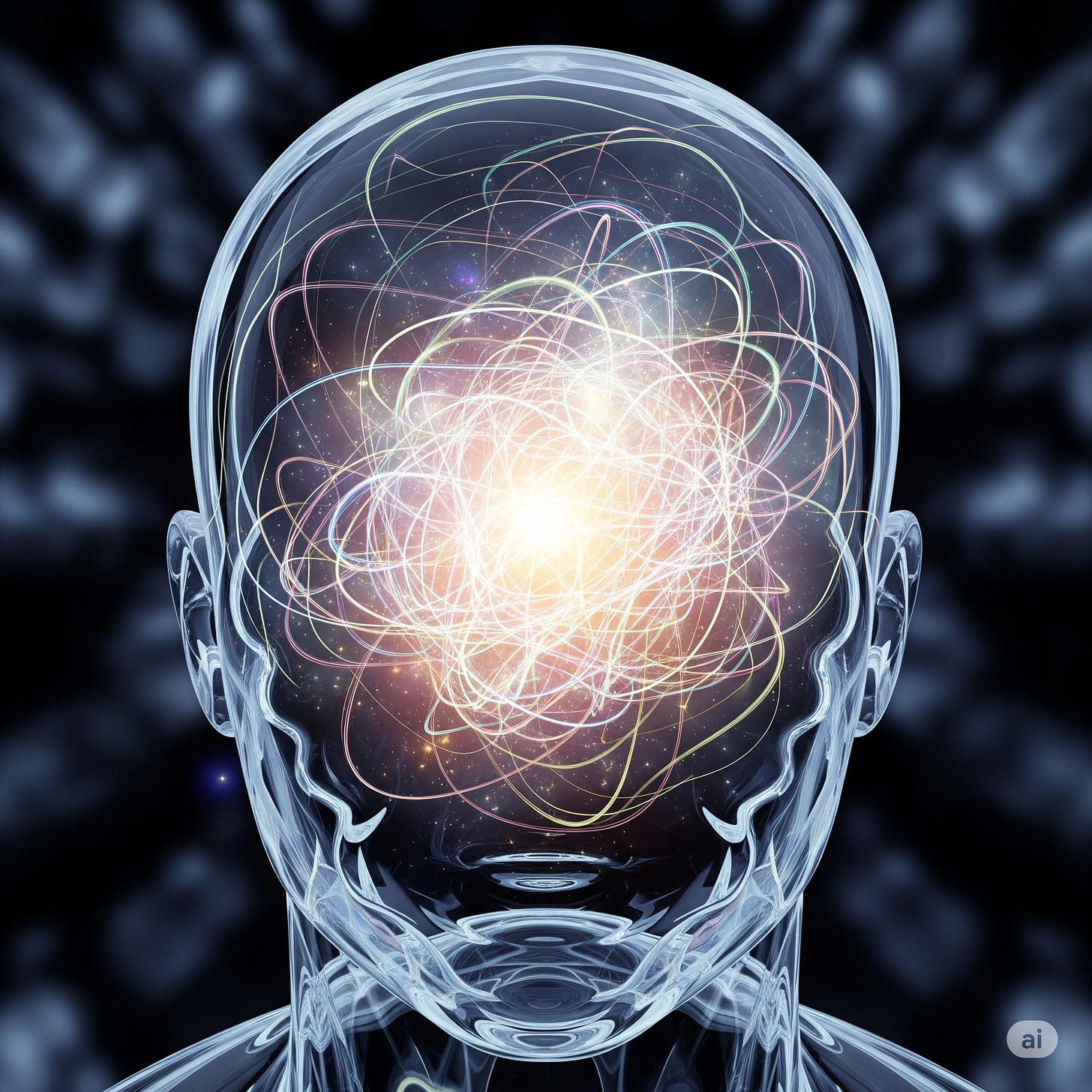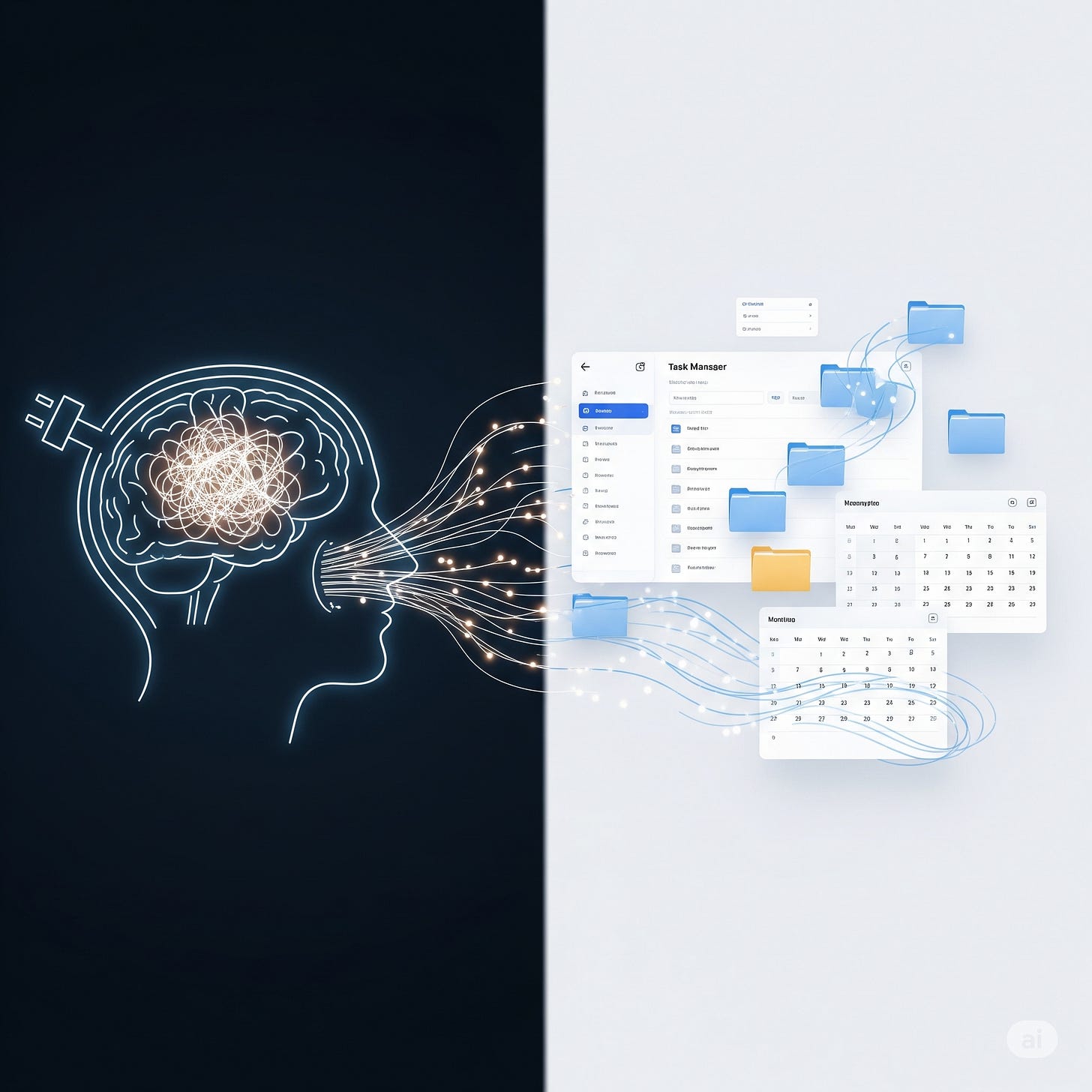From Overwhelm to Order: Managing Stress-Related ADHD and Cognitive Overload
The Hidden Weight of Mental Overload
Picture this: your mind feels like it's wrapped in thick fog, making even simple tasks feel impossible. It's not just forgetfulness—it's a constant mental resistance, like trying to think through molasses. This is the reality of stress-worsened ADHD, a condition that's often misunderstood but deeply impactful.
For people with ADHD, especially those with the quieter Inattentive Type, the brain already works differently. It's constantly processing an overstimulating world. But when stress hits—whether from work deadlines, relationship challenges, or daily pressures—it doesn't just add to the mental load. It multiplies existing struggles.
This creates a vicious cycle. The brain's natural difficulty with filtering information, setting priorities, and starting tasks becomes almost impossible to manage. Decision-making feels like wading through quicksand. Even minor choices become overwhelming.
This article provides a strategic roadmap for breaking that cycle. ADHD isn't a character flaw—it's simply a different operating system. The key isn't generic coping strategies, but understanding exactly how stress affects your unique brain and building specific systems to manage it.
How Stress Amplifies ADHD Symptoms
To solve any problem, you first need to understand it completely. Let's break down exactly how stress makes ADHD symptoms worse and why everyday tasks become so much harder under pressure.
The Stress Accelerator: What Happens in Your Brain
The connection between chronic stress and worsened ADHD symptoms is real and measurable. When you're stressed, your body produces more cortisol (the stress hormone). This directly impacts your prefrontal cortex—the brain region responsible for executive functions like planning, prioritizing, memory, and impulse control.
For people with ADHD, this brain area already works differently, particularly with regulating key neurotransmitters like norepinephrine and dopamine. When stress floods this system, it's like adding fuel to a fire. Tasks that were already challenging become exponentially harder, sometimes feeling impossible.
This explains why you might handle certain situations fine on calm days, but completely fall apart under pressure. It's not a personal failing—it's your brain's natural response to stress.
Analysis Paralysis: When Too Many Choices Freeze You
One of the most frustrating effects of stress-worsened ADHD is analysis paralysis. This isn't simple indecision—it's feeling completely overwhelmed by options, where even small choices feel impossibly complex.
The mechanism behind this is a processing bottleneck. Your brain becomes flooded with sensory and informational input. It struggles to filter important signals from background noise, prioritize competing demands, or organize tasks logically. The result? Your mental system gets stuck in an endless, unproductive loop.
The Start-Stop Cycle: When Momentum Dies
Sustained stress destroys your ability to maintain routines and habits—structures that are already challenging for ADHD brains to build and keep. This leads to frustrating "start-stop" cycles where you begin tasks, abandon them due to mental fatigue or perceived difficulty, then restart them later with even more resistance.
These cycles create internal feelings of failure and self-criticism, which reinforce negative thought patterns and make everything feel even harder.
Emotional Overwhelm: When Your System Overloads
When your cognitive system is overtaxed, emotional regulation suffers. Small frustrations explode into major irritation, or you might completely shut down and disengage. These aren't character flaws—they're direct results of a nervous system pushed beyond its limits.
Your brain's capacity for managing emotions decreases, leading to reactions that feel disproportionate to the trigger and a constant sense of being overwhelmed by feelings you can't control.
Decision-Making Breakdown: When Everything Feels Unclear
The combination of stress and ADHD severely impacts decision-making abilities. You lose the capacity to separate relevant information from irrelevant noise, leading to poor choices or complete avoidance of important decisions.
This affects both quick, in-the-moment responses and long-term strategic planning. Instead of being proactive, you become reactive, driven by immediate impulses rather than thoughtful choices.
Building Your Cognitive Resilience System
Now that we understand how stress worsens ADHD symptoms, let's build practical systems to fight back. These aren't quick fixes, but proven strategies designed to work with your unique brain architecture.
The "Minimum Effective Dose" Strategy
The first principle is ruthless prioritization: identify the essential tasks that produce maximum results with minimal mental effort. This "Minimum Effective Dose" approach eliminates decision fatigue by reducing unnecessary choices.
Practical application: Pre-make daily decisions to eliminate micro-choices that trigger overwhelm. For example, decide the night before what you'll work on first thing in the morning. This removes a small but significant decision point that can derail your entire day.
Use the "Two-Minute Rule": if a task takes less than two minutes, do it immediately. This simple rule eliminates the mental burden of remembering small tasks and prevents them from accumulating into overwhelming lists.
Remember: What you don't do can be as powerful as what you do. Eliminating low-impact activities frees mental bandwidth for what truly matters.
Breaking Down Overwhelm: The "Smallest Step" Method
Feeling overwhelmed is a hallmark of stress-amplified ADHD. Combat this by breaking complex tasks into impossibly small, achievable steps. This directly reduces the mental energy needed to start and eliminates analysis paralysis.
Instead of "write report," start with "open the document." If that feels too big, try "find the document icon." Keep reducing until the action feels effortless.
The psychology behind this works: Each tiny completion builds momentum and creates a positive feedback loop. Consistent micro-progress creates what researchers call a "success spiral"—where small wins generate energy for bigger wins.
"The journey of a thousand miles begins with a single step, but it's the consistency of taking that step that completes the journey."
Creating Your "External Brain"
ADHD brains often struggle with consistent internal organization, memory, and task sequencing. The solution is building reliable "external brain" systems that compensate for these internal variations.
Digital tools for cognitive support:
Task management apps (like Todoist) for tracking discrete actions
Project management platforms (like Notion) for comprehensive tracking
Digital checklists for routine processes
Automated reminders for recurring commitments
Cloud-based storage for searchable information backup
These external systems aren't crutches—they're strategic tools that free your brain from the exhausting work of remembering and organizing, allowing you to focus on what you do best.
Key principle: Systems create freedom. By building external cognitive scaffolding, you liberate internal mental resources for more productive uses.
Strategic Environment Design
Your physical and digital environments significantly impact cognitive load. A strategically designed workspace actively minimizes distractions and reduces background mental effort.
Physical space optimization:
Remove visual clutter and organize items with designated places
Use noise-canceling headphones to create a focused "bubble"
Position your workspace to minimize external distractions
Digital hygiene protocols:
Disable unnecessary notifications
Close unused browser tabs regularly
Use website blockers during focused work periods
Organize digital files with consistent naming systems
"We shape our buildings; thereafter they shape us." This principle applies equally to digital and physical workspaces. Every element that passively demands attention adds to cognitive load.
The Psychology of Long-Term Success
Implementing these strategies consistently requires more than tactics—it demands emotional intelligence and strategic self-discipline. ADHD management is a long-term commitment to self-mastery, where consistent effort (even when imperfect) creates significant transformation.
Structure as Freedom: The Discipline Paradox
For ADHD brains, discipline isn't restriction—it's liberation. When your internal world feels chaotic, external structure becomes the stabilizing anchor.
Build non-negotiable routines:
Morning routines that prepare your nervous system for focus
Consistent work blocks that signal "concentration time" to your brain
Evening wind-down rituals that prevent harmful rumination
This isn't about rigid control. It's about creating predictable patterns that minimize decision fatigue and maximize focused output opportunities.
Core principle: Discipline equals freedom. Deliberate structure is the highest form of self-liberation for ADHD brains.
Embracing "Good Enough": The Strategic Power of Imperfection
The pursuit of perfection often becomes the enemy of consistent progress, especially with fluctuating executive function. For people with ADHD, perfectionism frequently leads to paralyzing analysis and complete inaction rather than steady advancement.
Apply the "70% rule": Getting something done is 70% of the battle. The remaining 30% can be refined later if necessary. The crucial insight is that imperfect action manages the mental and emotional friction that otherwise creates complete stagnation.
Reframe your internal narrative: Instead of "I can't do this; I always fail," try "I'm building my systems and getting better over time." Action, even imperfect action, builds momentum and prevents the downward spiral of self-criticism.
Building Your Future Self: Neuroplasticity and Growth
ADHD isn't a static condition to endure—it's a dynamic journey of skill-building. Your brain's neuroplasticity means that consistent, deliberate effort can forge new neural pathways and strengthen existing ones, leading to real improvements in executive function.
Use "Future Self" visualization: Imagine the version of yourself who operates with greater clarity, less friction, and stronger discipline. Understand that every positive action is a vote for becoming that person—literally rewiring your brain for resilience.
Growth mindset in action: View challenges as opportunities to strengthen your mental "muscles" rather than evidence of permanent limitations.
Self-Compassion as Strategy: Managing the Internal Critic
The harsh internal criticism common in ADHD isn't just emotionally painful—it's strategically counterproductive. Treating yourself with measured understanding prevents the devastating cycles of shutdown and self-sabotage.
Practical self-compassion means:
Recognizing that some days are inherently more challenging
Understanding that setbacks are inevitable and informative
Prioritizing persistence over perfect execution
Reframe self-criticism: Treat your struggling mind with the same patience you'd show a valued colleague having difficulties. Strategic self-kindness fuels long-term consistency rather than cyclical self-defeat.
Your Action Plan: Start Building Resilience Today
Understanding these concepts intellectually is only the beginning. Real transformation happens through immediate, consistent implementation. The cost of inaction—continued cognitive overwhelm and emotional friction—far outweighs the effort required to build better systems.
Your Three-Step Implementation Process:
Step 1: Identify Your Primary Bottleneck
Review the frameworks above and identify which single issue creates the most daily cognitive drain:
Analysis paralysis from too many choices?
Inconsistency and start-stop cycles?
Emotional volatility?
Environmental chaos and distraction?
Step 2: Select One Framework
Choose the strategy that most directly addresses your identified bottleneck:
Minimum Effective Dose for decision fatigue
Smallest Step Method for overwhelm
External Brain systems for organization
Strategic Environment Design for focus
Step 3: Commit to 72-Hour Implementation
For the next three days, apply your chosen framework with unwavering consistency. Start small, but be relentless about daily application.
Remember: Small, consistent daily progress beats grand, abandoned attempts every time.
The Promise of Systematic Change
This isn't about overnight transformation—it's about building momentum that compounds over time. Each system you implement, each moment of focused effort, each act of strategic self-compassion moves you closer to the cognitive clarity and emotional stability you're seeking.
Your journey from overwhelm to order starts with one deliberate step. Take it today.




